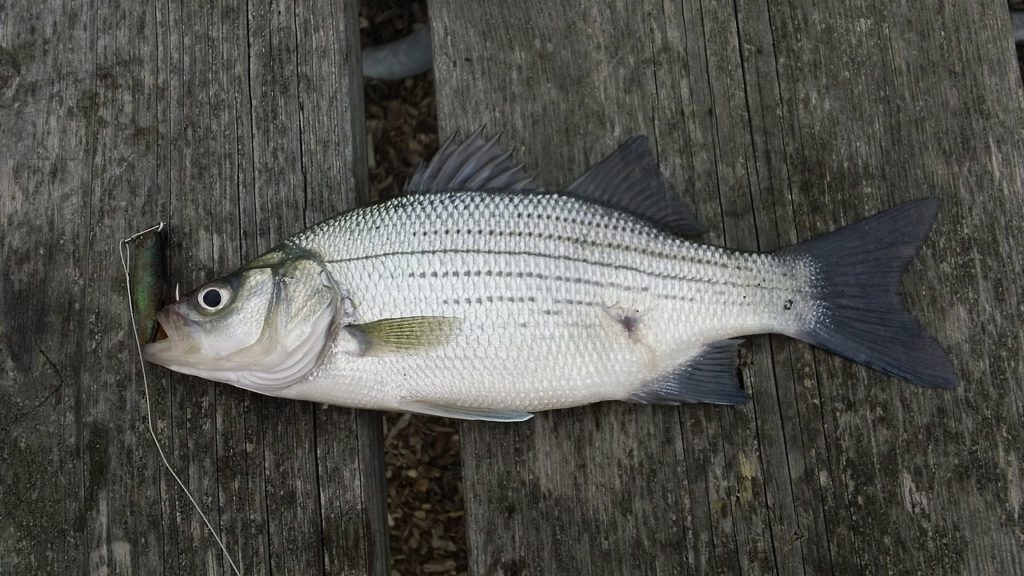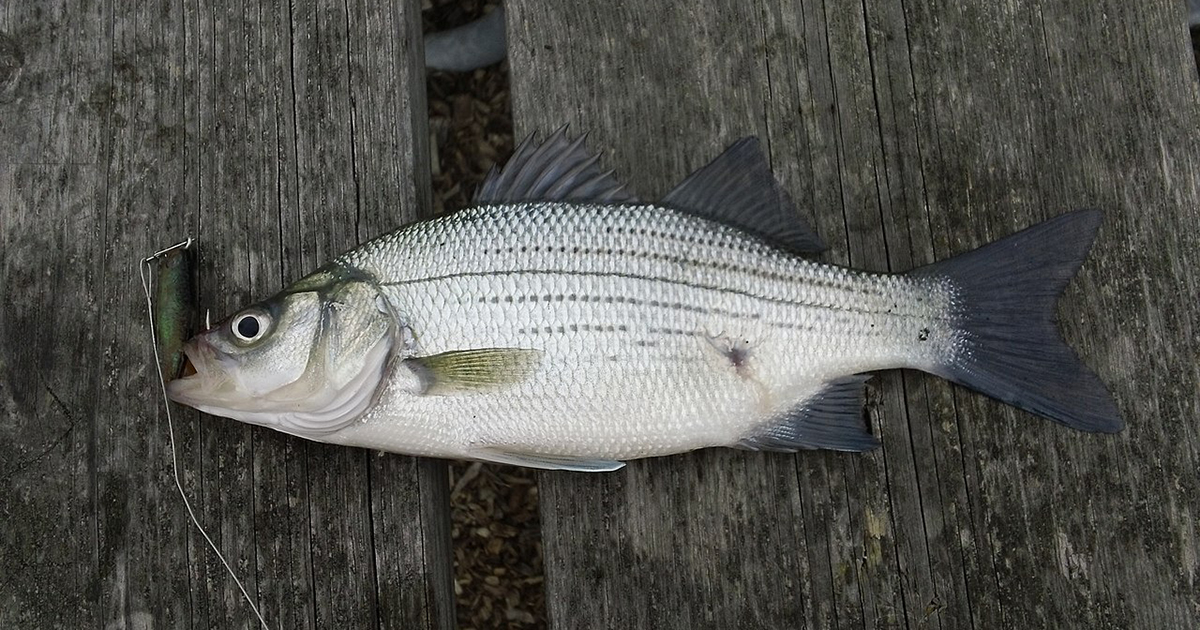Famous for walleyes and lake sturgeon, east-central Wisconsin’s Lake Winnebago offers ice-fishermen an action-packed alternative: white bass.
In fact, the feisty silver fish typically provide some of Winnebago’s best winter action, treating anglers to hard battles and tasty fish fries, even when the bite for other species seems stagnant.
“I like to fish for them because when you land on a good school of them, the action can be fast and furious,” said Tim Winchester, a walleye-tournament-winning angler from Omro, Wisconsin. “Many times, you will have multiple fish coming up for the bait when you are lowering it back down after you have already caught one. You have heard the term one after another? Well, that really holds true with white bass. They are actually great table fare as well, in the winter or whenever the water is cold. Kids really enjoy watching their electronics light up when a school shows up, and being able to watch the fish come up on the locator and hit the bait.”
Best of all, you don’t need a sled full of specialized gear to join the fun. Here’s how to get started.
Where, How
White bass (Morone chrysops) are predatory fish that typically congregate in large schools. They’re sight feeders that generally focus on minnows, although they’ll also eat other forms of live bait.
“White bass are famous for keying in on gizzard shad when the system has big shad hatches,” said Adam D. Nickel, fisheries biologist with the Wisconsin Department of Natural Resources. “During the summer, white bass will school up and force gizzard shad to boil on the water surface during the feeding frenzy. We haven’t had any diet studies done on white bass in the system, but like other game-fish species, they likely feed on whatever is most abundant for forage on a given year. That may include trout-perch and emerald shiners, as well as juvenile freshwater drum, panfish and game-fish species.”
Unlike some fish species, Nickel said, white bass stay relatively active in cold water, which makes them ideal targets for ice anglers.
“The colder water temperatures during winter will slow down the metabolic rate for most fish species, including white bass, but their predatory nature will spur them to feed throughout the winter,” he said. “It’s hard to really say why they may be more aggressive than other fish species, but I think part of it is due to their schooling behavior in the winter. Schooling makes them easier to find for anglers, and then they can focus on catching the active fish out of the school.”
As during other seasons, forage concentrations typically dictate the winter location of white bass schools, and anglers use minnow-mimicking approaches to catch them.
“The best areas that I have found for them are typically on the eastern side of the lake, from Brothertown south,” Winchester said. “I’m not sure why, but there are usually more white bass over there. I typically jig for them, and my absolute best bait for them is a gold Kastmaster spoon with spikes on it. I do catch them on Rapalas, but the Kastmaster typically outfishes them.”

Winchester takes a relatively impatient approach for white bass, relying on their aggressive nature and his presentation to reveal hot areas.
“My best technique is to be mobile,” he said. “I fish a spot about 10 to 15 minutes, and if I don’t mark anything on my sonar or catch any, I move. Usually when you find one, there’s a bunch there. When I see a large group of guys forming, I try to stay out on the edge of them because sometimes the fish will move when the fishing pressure get heavy. I am usually jigging about 3 to 4 feet off of the bottom because it seems like when the fish have come off of the bottom that far they are more likely to be active and bite, versus when I’m fishing tight to the bottom.”
White bass concentrations can vary throughout ice season depending on several factors, but Nickel said it can be difficult to predict their location as winter progresses.
“We haven’t conducted any movement studies for white bass on the system, so it’s tough to say what type of seasonal movements occur during the ice season,” he said. “The peak of the white bass run often coincides with Mother’s Day during May, so there is a fair amount of time between ice-out and the spawning period. There may be some staging in the river mouths and Upriver Lakes following ice-out, but it’s tough to estimate what their exact movements are without more study.”
The Current Scene
Winchester said that the winter white bass bite typically hinges on the system’s forage base.
“When the gizzard shad numbers are high, it seems like the walleye bite is a little slower,” he said. “Shad are a really oily and fatty minnow, unlike a shiner minnow, so when a walleye eats one, it can go a while between meals. Right now, the shad numbers are way down, so the walleye bite is really good. This year (winter of 2018–2019), the white bass numbers are really down, so that bite is very scattered. When the shad numbers are high, a white bass really can’t eat a baitfish that size, so that’s when we typically see a better bite for white bass.”
Nickel confirmed Winchester’s comments on the current white bass population. The Winnebago System often holds an extremely high population of white bass, but those numbers depend on annual production, which has been spotty lately. For example, during 2018 trawling surveys, the catch rate for young-of-the-year white bass was just 0.8 per trawl, which is far less than the average rate of 32 per trawl.
“The strong 2011 year-class (the second largest on record, which averaged 102.4 per trawl) and the above-average 2012 year-class have dominated the adult white bass population in recent years,” he said. “However, some anglers reported that white bass were tough to find in 2018, particularly during the famous spring river run. Environmental conditions such as water levels and forage trends can influence fishing success, but having strong year classes is critical for providing a quality fishery. As the 2011 and 2012 year-classes fade from the adult population, the fishery will depend on more recent year-classes.”
Nickel said the catch rate for adult white bass during 2018 sampling was 5.0 per trawl, so there’s still a good adult population in the system.
“The measurable 2016 year-class (17.6 young-of-the-year per trawl) should help to contribute to the adult fishery, but white bass anglers on the system are waiting for another strong year-class to be produced to boost the adult fishery,” he said.
Conclusion
As fishermen hope for good reproduction to boost populations, they continue to enjoy steady winter white bass action. Wisconsin has no size or daily bag limits for white bass, so anglers can fill a bucket with the feisty fish during good days. White bass often strike violently and fight hard, even in frigid winter water, making them enjoyable targets for light tackle.
Further, as Winchester mentioned, white bass have firm flesh and taste good, especially when caught from cold water. Veteran fishermen recommend removing the skin and mud line (a line of dark-colored muscle mass) from fillets to improve palatability.
With so much to offer — great winter action, rod-bending fun and bountiful fish fries — it’s no wonder Lake Winnebago’s white bass continue to attract hard-water anglers. Take a break from panfish or walleyes to chase these scrappers.


